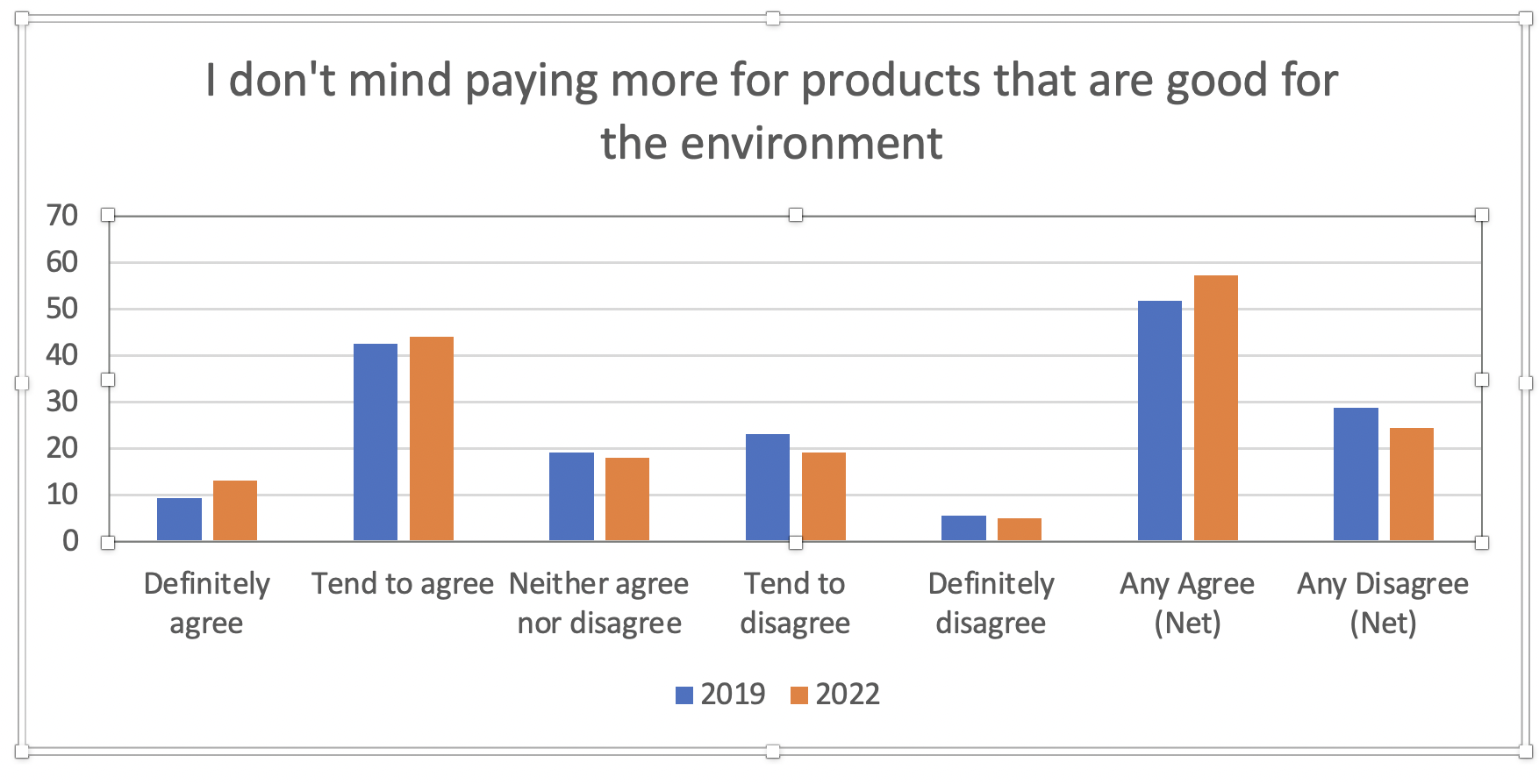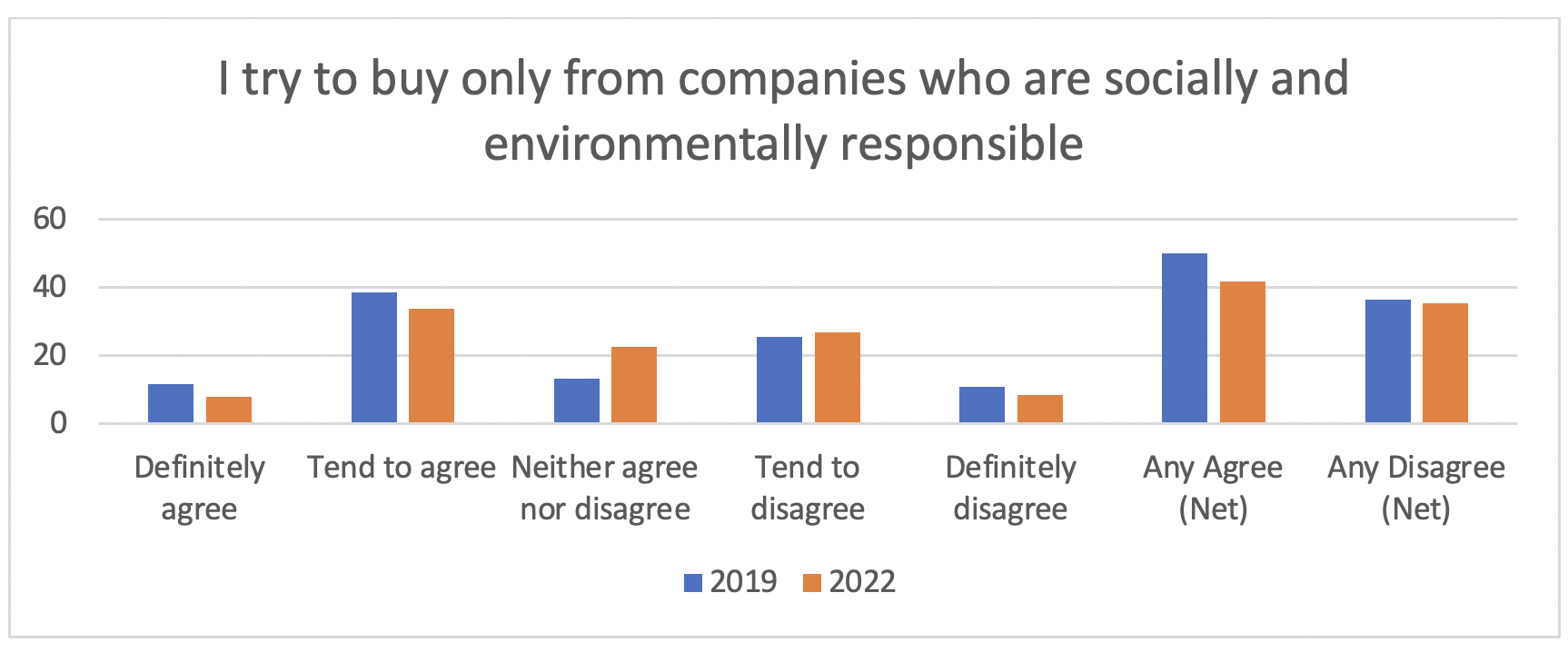When value and values collide

Opinion
Those who mistrust purpose-driven marketing want to see receipts. Where you can measure impact or cost, display them with pride.
Work in marketing, and you won’t have escaped the purpose debate: can a brand deliver ‘good’? The question is widely covered and much discussed, everywhere from meeting rooms to conference stages. An important question, no doubt, but instead of thinking about purpose from a marketeer’s perspective, we should be focussed on it from a people perspective.
As people brace themselves for yet more uncertainty, conflict and belt tightening, we must show empathy for people’s varying circumstances. In marketing, empathy is imperative. If you don’t understand the concerns and behaviours of your audience, you risk tone-deaf messaging, faulty placement, and disengagement.
Brand purpose and the mood of the nation
Value-based decision making is real, and more prevalent amongst a younger age cohort in the UK. At Carat, we’ve used dentsu’s Consumer Connection System (CCS) data to prove this – 46% of 18 to 35-year-olds in the UK say they only buy products from ethical companies, compared to 27% of over 55s. So, it is theoretically set to grow. And there has been some uplift in that sentiment, as it pertains to environmental values, in the last two years;

But how does value-based decision-making fare when up against other (also ever-increasing) demands on our time, pockets and lifestyle? In the last three years there’s been a dip in those who say they try to only buy from socially responsible outfits – and a significant uplift of those sitting on the fence.

Could this be the Amazon effect? In light of lockdowns and working from home, more people have turned to Amazon for ease and convenience, despite public allegations that they’re not always ethically sound. Amazon’s UK sales rose by 51% in 2020; only a year after reports of their workers having to pee in bottles made headline news.
Recently I admired a friend’s new buggy, bought after her one-year-old was stuck in an unwieldy cast. She sheepishly confessed that it came from Amazon; usually, she said, she’d go to the local children’s store – but they’d had to make so many purchases post operation, she’d bowed to ease, speed, and price.
Will the almighty squeeze in the cost of living relegate ethics to a ‘nice to have’?
We think not – the pandemic made people more inclined to support local, small businesses over big brands. However, for many, that ethical decision making will take a back seat when they’re budgeting for the month ahead, and feeling the effects of a 13-year high in grocery price inflation, record high fuel prices, and repeated energy price cap increases.
For many, when they weigh price against principles, it’s price that’ll come out on top.
Carat’s Brand EQ report proved that brands who act in the most ‘emotionally intelligent’ way outperform brands with lower EQ to such a great extent that it’s in our interests to act with empathy. That means taking the time to understand the issues your customers are facing.
How to respond
Marketers are going to have to rethink how they position purpose, in a bid to show they understand the realities of their customer’s lives.
First, understand the different ways in which cost of living impacts on different people. To that end, we’ve built a bespoke segmentation to aid marketers as they try to understand the real impact on different people, and have made it publicly available, so that all of us can benefit.
We’ve divided the UK population into five segments, based on financial standing and concerns;
- Keeping Heads Above Water (18% of the population)
- Budgeting to Survive (23%)
- Budgeting to Maintain a Lifestyle (15%)
- Comfortably Unaffected (19%)
- YOLO (24%)
Next, build strategies that demonstrate understanding of these mindsets.
Lipstick effect it
It’s been claimed that one of the unforeseen consequences of economic peril is an increase in lipstick sales; people still want accessible treats. Luxury spending might drop, but that’s not going to stop some (small) splurging when payday rolls round.
Similarly, marketers should think about how their social purpose might help customers make concessions to ethics and environment, where they can’t fully commit. Can’t afford to forego fast fashion? Consider an affordable brand who commits to the living wage.
Those Budgeting to Maintain a Lifestyle are willing to spend to keep life sweet – but need to know it’s ‘worth’ it. Where you have a progressive employer brand, shout about it, proving that your brand should still make the cut when cuts are made.
Prove worth close to home
Investigate the concerns of your customers to understand where real impact can be made and, where appropriate, focus your efforts there.
People Budgeting to Survive are well aware of the impact that rising costs are having on families; they’re living it. They will feel more positively towards brands who can prove that they are alleviating pressure in hard-hit communities.
Show you’re taking the load
If a brand seeks to financially benefit from social corporate responsibility, is it really doing any good? Aside from sounding like new age philosophy, brands can use this sentiment to steer their thinking.
People Keeping their Heads Above Water can’t afford to pay for your policies. So ensure they know that any cost of doing good is falling squarely on your shoulders.
Those who mistrust purpose-driven marketing want to see receipts. Where you can measure impact or cost, display them with pride.
When brands commit, they have the opportunity to demonstrate to customers, and prospective customers, that they understand the issues they face – in light of the cost-of-living squeeze, there are even more people in need of that empathy.
 Maddy Sim is strategy partner at Dentsu media agency Carat.
Maddy Sim is strategy partner at Dentsu media agency Carat.
Strategy Leaders: The Media Leader’s weekly bulletinwith thought leadership, news and analysis dedicated to excellence in commercial media strategy.
Sign up for free to ensure you stay up to date every Tuesday.





